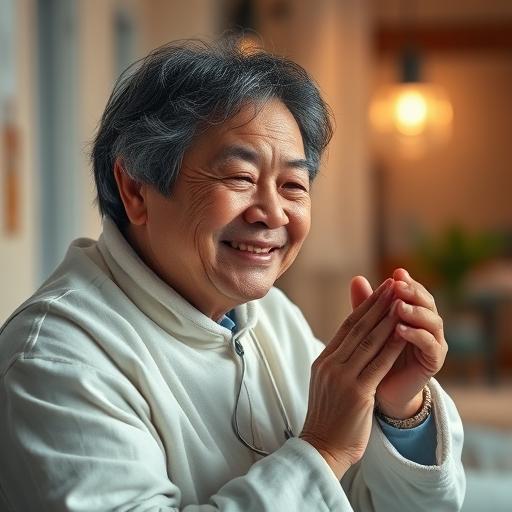Bridging Ancient Wisdom and Modern Science
The idea of using heat to heal is as old as civilization itself. From the sweat lodges of indigenous cultures to the hot springs frequented by ancient Romans, people have long recognized the therapeutic benefits of elevated temperatures. This deep-rooted understanding is now being validated by modern science through innovative approaches like hyperthermia cancer treatment, a method that applies controlled heat to target and weaken cancer cells, making them more susceptible to other treatments.
What’s truly special is the parallel between the communal nature of traditional healing and the support systems in modern care. Ancient healing practices were rarely done in isolation; they involved the family and the community. This collective spirit is mirrored in the supportive, patient-focused environments of today’s integrative clinics, where emotional and mental well-being are considered key parts of the healing journey. It’s a beautiful blend of past and present.
What Exactly is Hyperthermia Therapy? 🤔
So, what’s the science behind this heat-based therapy? Put simply, hyperthermia involves raising the temperature of body tissue to levels between 104°F and 113°F. At these temperatures, cancer cells, which are more sensitive to heat than healthy cells, can be damaged or even killed. More importantly, this heat makes cancer cells more vulnerable to the effects of other treatments like radiation and chemotherapy.
This therapy isn’t a one-size-fits-all approach. It can be applied locally to a small area, regionally to an entire limb or organ, or to the whole body. It is almost always used as an adjunct therapy, meaning it works alongside primary cancer treatments to improve their effectiveness. Think of it as a powerful ally that helps conventional therapies do their job even better, giving patients an extra edge in their fight.
A Nod to History: Heat as a Healer
Long before we had medical terminology for it, the power of heat was well-documented. The ancient Egyptians noted its effects in medical texts, while the Greek physician Hippocrates, the “father of medicine,” famously said, “Give me a fever and I can cure any disease.” He observed that illnesses sometimes went into remission after a person developed a high fever, hinting at the body’s natural ability to use heat as a defense mechanism.
These historical threads show that hyperthermia isn’t some brand-new, experimental idea but rather the scientific refinement of ancient intuition. What modern medicine brings to the table is incredible precision and control. We can now target specific areas with controlled heat, maximizing the benefit to cancerous tissues while protecting healthy ones. It’s a testament to how science can build upon timeless wisdom.
The Community’s Role in Healing Journeys
A cancer diagnosis can feel isolating, but healing has always been a communal act. Traditional societies understood that wellness extends beyond the physical body; it includes the mind, spirit, and social connections. Healing rituals often brought people together, reinforcing bonds and providing a powerful network of emotional and spiritual support for the individual.
This principle is just as relevant today. A strong support system—family, friends, and a compassionate clinical team—can have a profound impact on a patient’s resilience and outlook. Modern clinics that foster a sense of community and treat patients with warmth and empathy are channeling this age-old knowledge. When people feel seen and supported, they are better equipped to face the challenges of treatment. 🤗
Integrating Approaches for a Holistic View
The concept of “integrative oncology” is all about combining the best of both approaches. It thoughtfully incorporates evidence-informed complementary therapies, like hyperthermia, alongside standard medical treatments. This creates a more comprehensive and person-centered care plan that addresses the whole individual, not just the disease.
Adopting a holistic view means acknowledging that a patient’s well-being is multifaceted. It’s about offering treatments that are physically effective while also supporting mental and emotional health. This empowers patients by giving them a more active role and a broader set of tools in their healing process. It’s a shift from just fighting a disease to nurturing overall wellness. 🙏
Patient Stories: The Human Connection
We often hear from people who feel a sense of comfort knowing their treatment connects to a long lineage of healing traditions. One person shared that viewing hyperthermia through this historical lens made it feel less like a cold, clinical procedure and more like a natural, intuitive part of their journey. This mental shift was incredibly reassuring during a very difficult time.
This connection can provide profound psychological strength. It reframes the experience, linking a modern medical intervention to a timeless, human quest for healing. This bridge between technology and tradition helps ground patients, reminding them that the methods may change, but the fundamental human desire for wellness and community support remains constant through the ages.
Looking Ahead: The Future of Integrative Care ☀️
As our understanding of cancer deepens, the future of treatment is pointing toward more personalized and integrated strategies. We will likely see an even greater blending of high-tech medicine with wisdom from traditional practices. The goal is to create treatment plans that are not only more effective but also gentler on the body and more supportive of the human spirit.
The path forward is bright. By honoring the knowledge passed down through generations and combining it with today’s scientific advancements, we can offer a more hopeful and complete approach to cancer care. It’s a journey that combines the best tools we have—from the precision of a modern clinic to the simple, profound warmth of human community.
